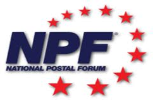


Copyright © 2016 South Jersey PCC - All Rights Reserved
Powered by P & T Computing
Your open communication
To the US Postal Service





Recent Posts

Copyright © 2013 South Jersey PCC - All Rights Reserved
Powered by P & T Computing

PCC Insider
Local PCCs offer the following benefits:
Knowledge – Gain knowledge about postal products, services, and tools to improve mail quality, as well as earn a professional certificate
Innovative Ideas – Learn about promotions and incentives that raise awareness of innovative mail uses
Expert Advice – Hear about how to integrate and expand your marketing through the mail
New Sources – Find new sources for acquiring mailing lists
Networking – Network with other mailers, business mail service providers, and USPS executives and hear first-hand from others about how they use mail to be more efficient and profitable, as well as face the same challenges you face
Best Practices – Leverage best practices to improve mailing effectiveness, efficiency, and profitability
Getting Started with Full-Service Intelligent Mail
New fact sheets are available to help mailers utilize Full-Service Intelligent Mail in preparation for the January 26, 2014 automation requirements. Click here to learn more about Full-Service Intelligent Mail, using Container Placards and the By/For relationship in electronic documentation.


National Postal Forum Blog

You can learn all about the programs at the new NPF web site, the premier online resource directory for the industry.
Take a look at the National Postal Forum BLOG SITE. You can find interesting updates, articles and notes of trending issues.
Seamless
Acceptance
Essentially, the seamless acceptance vision is to fully automate verification of commercial mailings performed during postal processing of the mail.
The goal is to streamline all aspects of acceptance, verification, payment, and induction.
Keys to achieving this goal are the expansion of customer-submitted electronic documentation and the use of Intelligent Mail barcodes on mail, handling units such as trays and sacks, and containers such as pallets. Information obtained from mailings in process helps to determine address accuracy, verify mail preparation quality, validate correct postage, and, with the use of Confirm service, track individual pieces as they move through the system.


Here's Why Retailers Keep Sending You Catalogs
From NPR.org - Uri Berlinger December 11th, 2014
Many things made with paper have become relics because of computers and the Internet: the Rolodex, multivolume encyclopedias, even physical maps. Now take a look in your mailbox or somewhere around your house. There's a good chance you'll see a shopping catalog, maybe a few of them now that it's the holiday season. "I ignore them," says Rick Narad, a professor at California State University, Chico. "I get them in the mail sometimes, and they don't make it into the house. I walk past the recycling bin, and they go right in." We look at them less as selling tools and more as magazines for our customers.
So why, in the digital age, are they still around? "Consumers really still love looking at catalogs," says Bruce Cohen, a retail private equity strategist at the management consulting firm Kurt Salmon. The company published an article called "Is the Catalog Dead?" and the answer was a definitive no.
The number of catalogs mailed in the U.S. peaked in 2007, according to the Direct Marketing Association. It's come down since then, but last year it ticked up again to a whopping 11.9 billion mailed to addresses around the U.S. "And what's interesting about that is you even have purely online companies starting to experiment with printed catalogs," Cohen says. So the death of print is highly exaggerated, at least when it comes to shopping. Mary Winter, a Binghamton, N.Y., resident who works at a Guitar Center warehouse, says she loves catalogs; she enjoys marking them up, and the tactile sensation of thumbing through them at her leisure. "I typically go online and order them and order whatever I'm getting," she says, "or go into the store because it's a little faster, but I still get my ideas from the catalogs." Sue Johnson, a U.S. Postal Service mail carrier in Bay City, Mich., has what you might call the 360-degree perspective. For 28 years she hauled catalogs and other mail in a satchel. "It builds up the muscles in your arms," she says. "A lot." Sometimes she would hand people their catalogs, and they would toss them out right in front of her. But when Johnson curls up on her couch at home, it's a different story.
"I'll sit here and read catalogs for hours and just look at stuff," she says. "Stuff I either wish I had, or maybe something will give me an idea to make something."
Maybe you're one of the catalog haters, but retailers say there are plenty of people like Winter and Johnson.
"We look at them less as tools and more as magazines for our customers," says Felix Carbullido, chief marketing officer at Williams-Sonoma. "They've become more editorial. They've become more of a sourcebook of ideas." Those aren't just fluffy marketing words. A Williams-Sonoma analytics team crunches data to help determine who's most receptive to catalogs, their size and their content. Versions are tailored to a customer's purchasing history. Carbullido says the payoff is evident at the brick-and-mortar stores. "Our customers come in with the catalog dog eared and refer to the catalog as 'this is the style of my home that I'm looking to achieve,' " he says. That style you've seen portrayed in high-end catalogs is often a tableau: maybe it's a couch, a bookcase, a couple of rugs, plants, sunlight streaming into a casually elegant room. Even if you're not buying, the retailers want you to keep dreaming. And that's one reason the catalogs keep coming.
